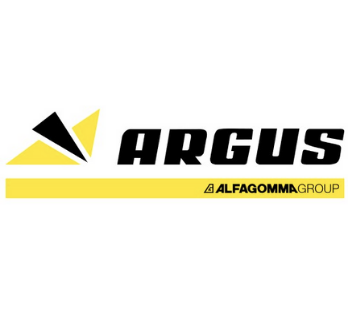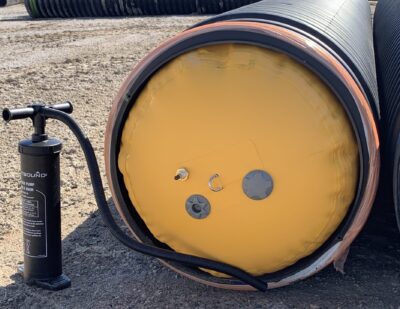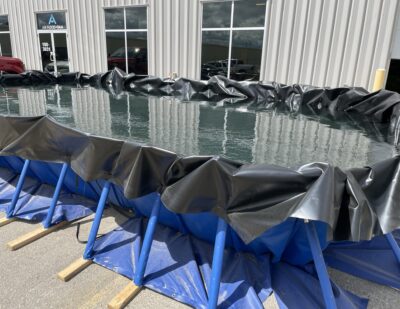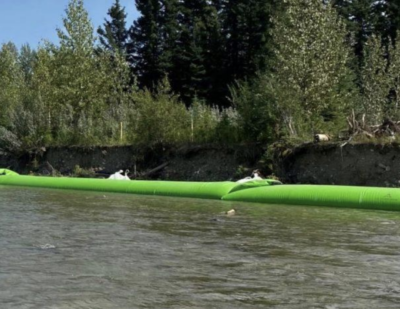We are based in Salisbury, Wiltshire and are part of the Alfagomma group.
We are the sole supplier for the UK and Scandinavia for our water inflated flood defence system “ALFA WATER BARRIER” in co-operation with our Canadian sister company.
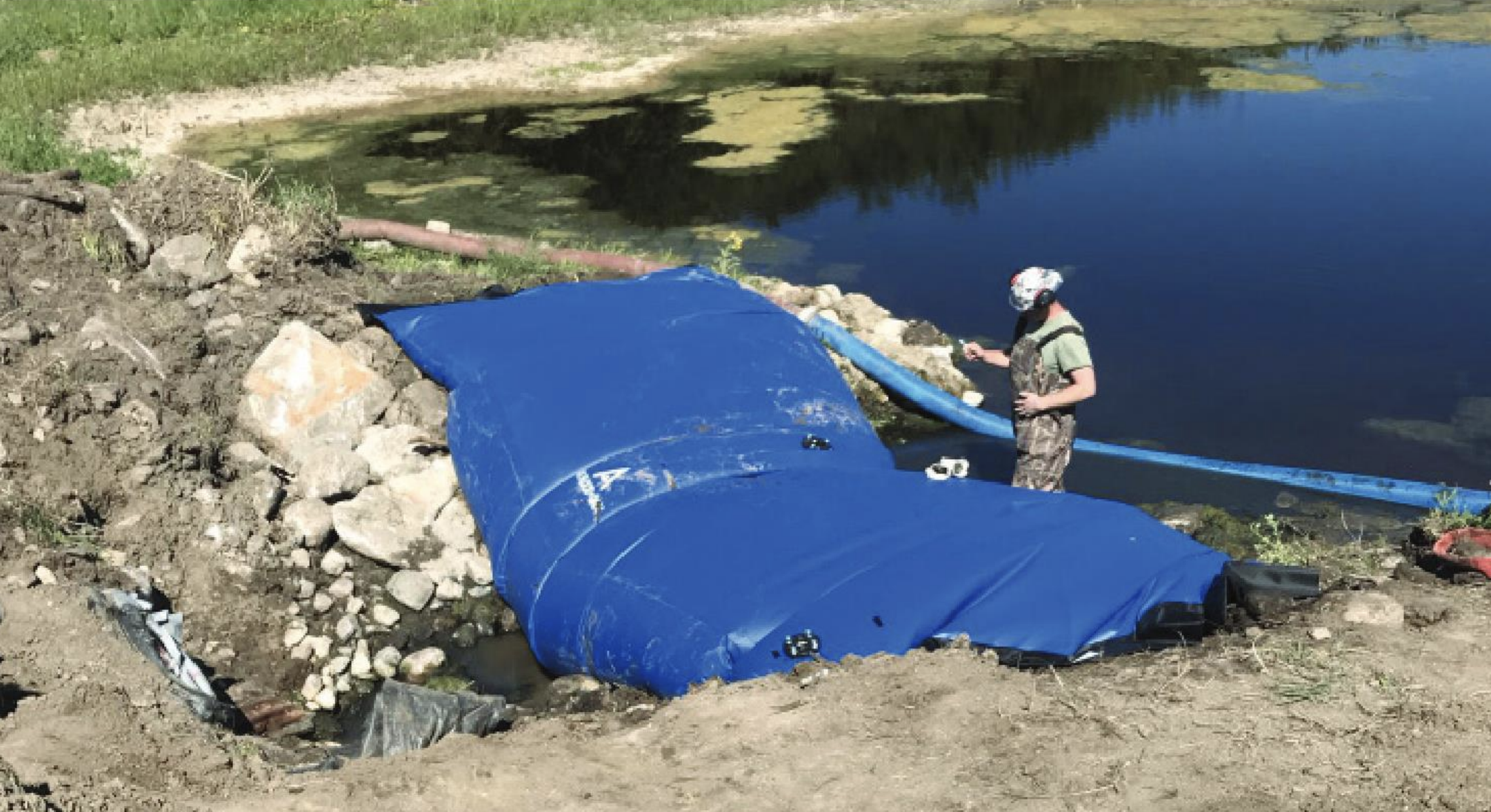
The Double Dam & Triple Dam barriers from Argus are water-inflated dams that quickly deploy and are filled with any available source of water and are very friendly where environmental impact is a concern.
They are reusable, provide flexible layout options, do not cause substrate damage, and are suitable for worksite dewatering and flood protection in waters up to 3’ (0.9m) deep (Double Dam) and up to 6’ (1.8m) (Triple Dam) as well as pond segregation and being retaining structures for liquids during drought conditions.
They are ideally suited for Agricultural / rural flood defence as well as commercial / industrial property and housing / community protection.
The “flood dams” have been specifically designed to be modular and can be joined together to obtain any length required. The “double dam” is easily deployable by a single person and the “triple dam” by two people. The sections are totally 100% reusable and fold up effortlessly for minimal storage space requirements.
Triple Dam
Triple Dams are reusable, repairable, provide flexible layout options, do no substrate damage, and are suitable for worksite dewatering and flood protection in waters up to 6’ (1.8m) deep.
Water-inflated dams are quickly deployed, filled with any available source of water, and are very friendly where environmental impact is a concern.
The Triple Dam features two internal stabilizing panels to provide safety and stability for all sizes from 3’ (0.9m) to up to 8’ (2.4m) high.
Our Water-inflated dams are quickly deployed, filled with any available source of water, and are very friendly where environmental impact is a concern. Triple Dam is reusable, provides flexible layout options, does not cause substrate damage, and is suitable for worksite dewatering and flood protection in waters up to 6’ (1.8m) deep. Triple Dam features two internal stabilizing panels which results in three constrained compartments for even greater stability.
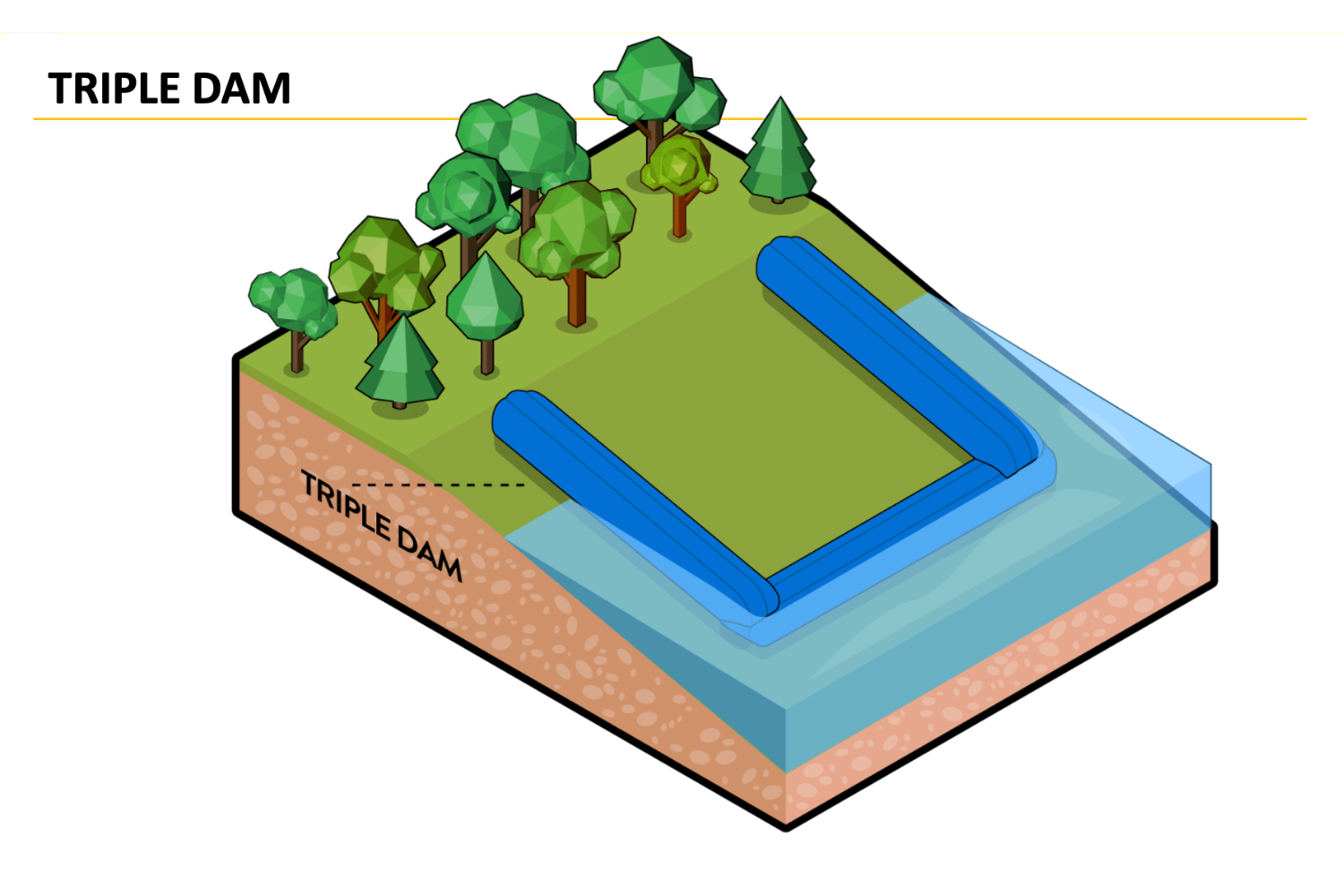
What is the difference between Double Dam and Triple Dam?
Double Dam features one interior stabilizing panel which results in two constrained compartments.
Triple Dam features two internal stabilizing panels which results in three constrained compartments for even greater stability.
Are they reusable?
Yes. They are designed and put away for repeated use. That’s a major advantage compared to conventional methods such as sandbagging or dirt berms.
Can you get sandbags from the council?
Your local council may have some sandbags ready to deploy at times of flooding, but their priority is to protect the public at large. You should check with your own local authority in advance to find out what their policy is and how you can get access to sandbags before flooding starts. It requires approx. 2,250 sandbags to cover the same area as 1 X 25m Alfa water dam @ £200 per 80 sand bags = £5625, less the legal disposal cost of the sand & bags – see regulatory requirements sheet following)
How do they compare to sandbags?
A 3’ high sandbag dyke would require approx. 30 sandbags per linear foot. Using conventional filling and placing methods, a rate of 12 bags per manhour can be applied, taking around 125 manhours to build a 50’ long dyke 3’ high, and in addition a cost of approx. £2.50 per sandbag.
A double/triple Dam at 3’X50’ can be deployed by two people in a couple of minutes and pumped full of water in less than 30 minutes. Cleanup time and cost benefits are even greater, especially when the reuse of the Double/Triple dam are factored into the cost.
Sandbags – Regulatory Requirements
This regulatory position statement (RPS) is for local authorities, and those acting on their behalf, who need to set up temporary collection points to store waste sandbags that have been used during a flood. If you comply with the conditions in this RPS you do not need to apply for an environmental permit for a waste operation to temporarily store waste sandbags at collection points.
This RPS only applies to:
- Storage of waste sandbags carried out by, or on behalf of, the local authority
- Temporary storage (not more than 3 months) of waste sandbags before they are sent for recovery or disposal at a permitted site
- Sandbags that have had a visual or olfactory (smell) assessment (or both) to help determine whether they may be hazardous waste
This RPS does not apply to any other activity, even if it is under the same legislation. You may still need other permits or licences for other activities you carry out.
Conditions you must comply with:
- Store all waste sandbags in a secure place – one where you have taken reasonable precautions to prevent waste escaping and where members of the cannot access them
- Segregate and store discarded sandbags that may be contaminated with hazardous waste in secure containers, or in an area with impermeable pavement and sealed drainage
- Use a registered waste carrier to transport waste sandbags from the temporary collection point to a permitted site for recovery or disposal
- Keep records for 2 years that show you have complied with this RPS – you must make these records available to the Environment Agency on request
You must make sure the stored sandbags do not endanger human health or the environment. They must not:
- Cause a risk to water, air, soil, plants or animals
- Cause a nuisance through noise or odours
- Adversely affect the countryside or places of special interest
This article was originally published by Argus Fluidhandling.

